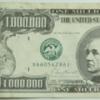I made some personal rules after a 'wood deal' with some guy and his wife, he who insisted on the largest walnut plaque I could find in a hurry, which I got from Marco (5 minutes from me), a 16" x 20" dark-light mix, which should've NEVER been sold as an award plaque-- I told this guy from the getgo that ALDER would be the best choice for what he wanted, but no, he thought Alder was 'cheap', and the biggest I could get within 2 hours was like 12x18". Sent my BIL to pick up the walnut, and uh oh...a patch job, right in the middle, and I swear the one half looked like pine and the other half was nearly black.. I called the guy and told him he wouldn't like it. No, sounds unique, it'll be fine, run it...
I ran it, and those Acacia samples above look fantastically stellar compared to this walnut. Neither side changed color, just cleanly vaporized. I ran 4 passes trying to get it to darken up the light side at least, but didn't matter, you could barely see the engraving! Guy picked it up, and -- well, was less than thrilled. I told him he might want to try staining the engraving... I also explained that what he sees is why I suggested Alder...
About an hour later the doorbell rings, and his wife is at the door, beside herself wondering what she was supposed to do with a plaque that she, nor who she was presenting it to in a few minutes, could read!? Not going to pay for this, want my money back!! What am I supposed to do!!??
Well, I explained to your husband that I thought that a different wood would be better for this--
Hell hath'd no fury is the best explanation for her new expression... "Oh. You did. I see. I'm sorry..."
I'm glad I wasn't the one in the car with her after that...
So yeah, after that fiasco, ever since then: (a) since Murphy's law works, I will always assume wood engraving will turn out like crap, and (b) I make sure to tell anyone who wants wood engraved the same thing, and they are proceeding at their own risk

And for the record, speaking of wood: NEVER EVER offer to laser engrave a violin that someone other than the actual owner brings you...




 Reply With Quote
Reply With Quote




 - fiber lasers
- fiber lasers